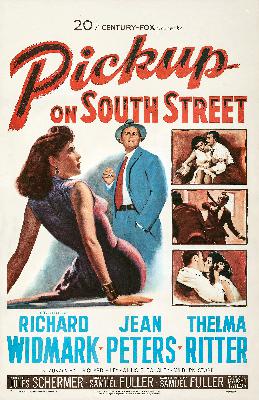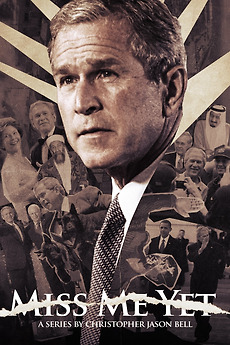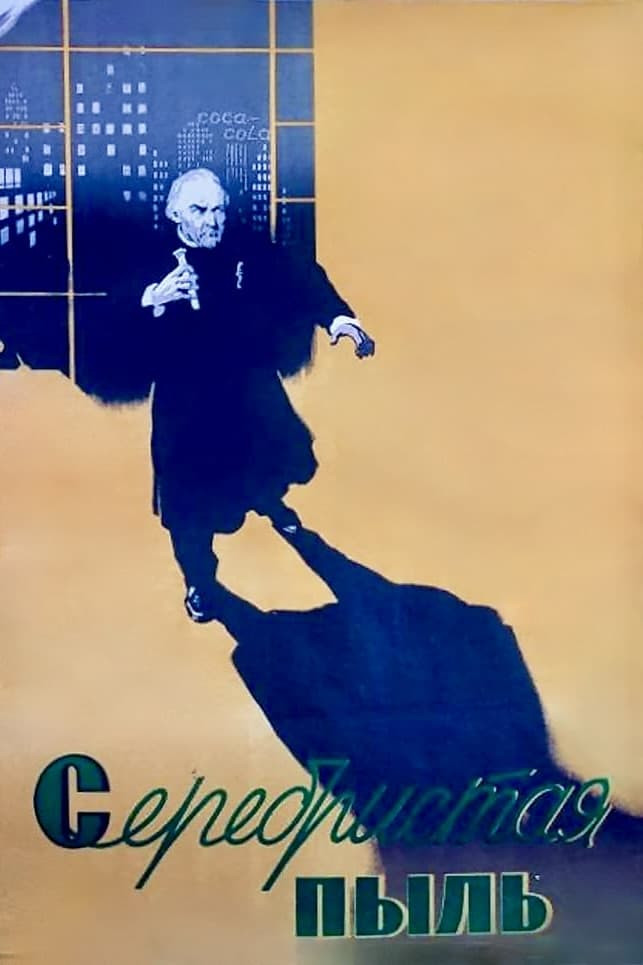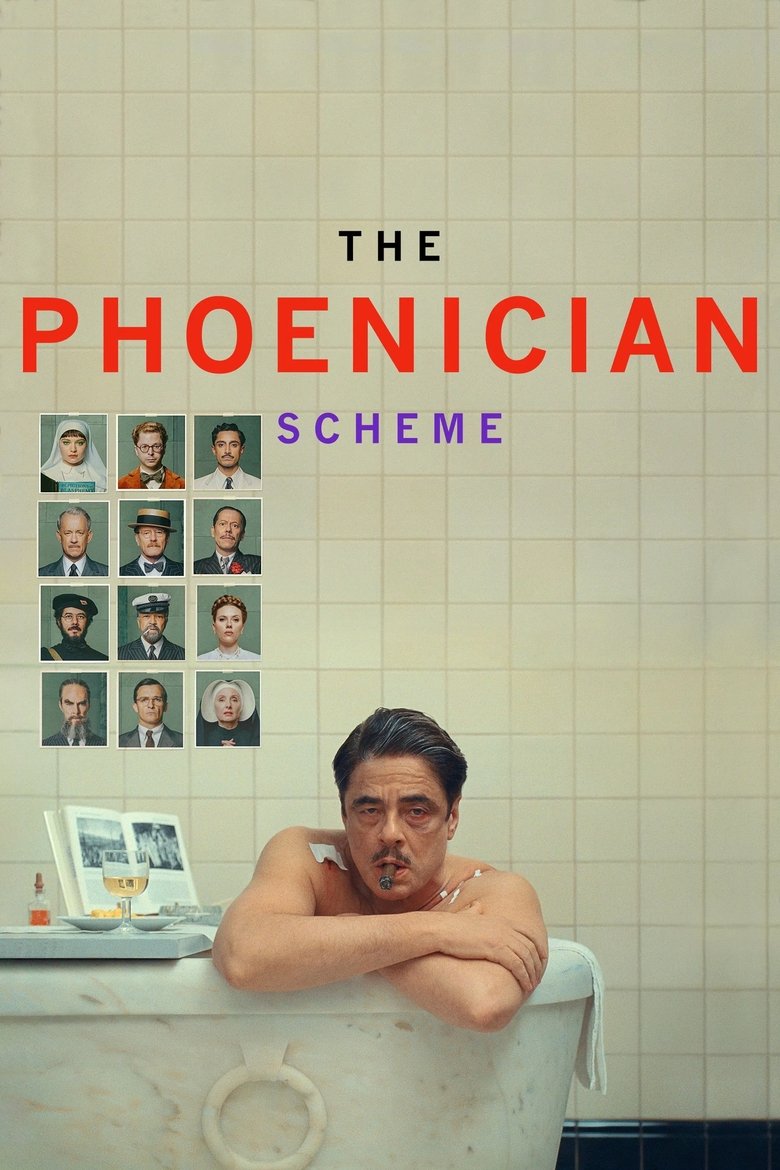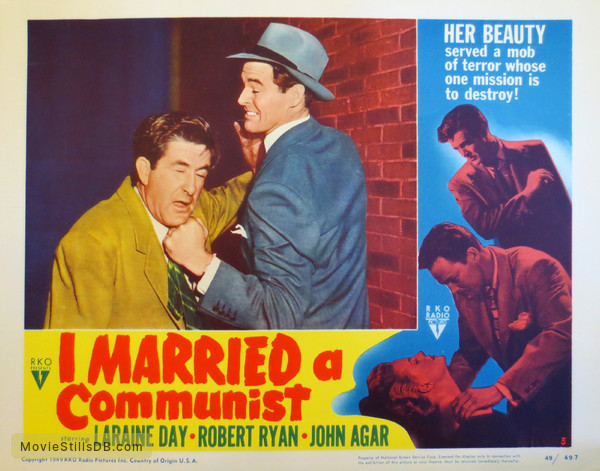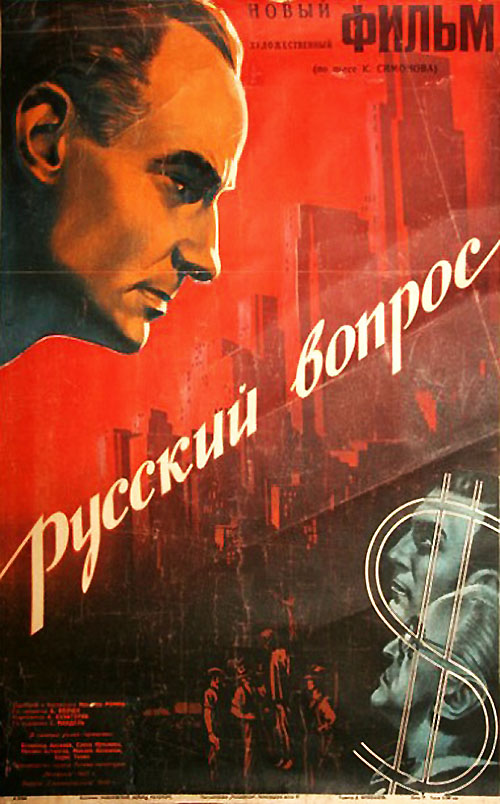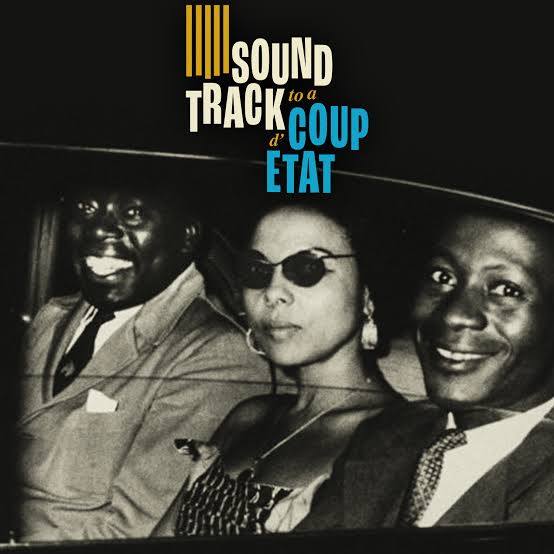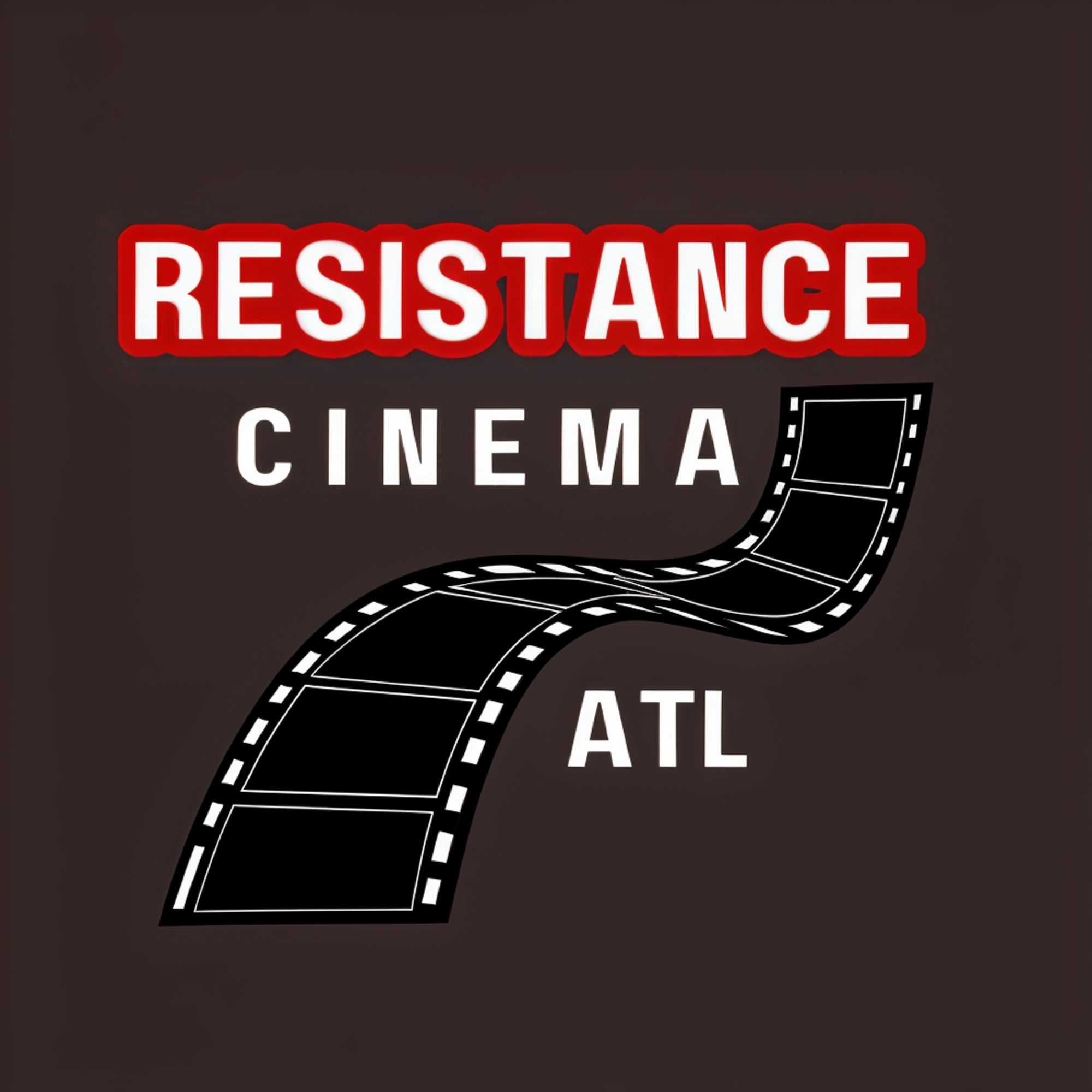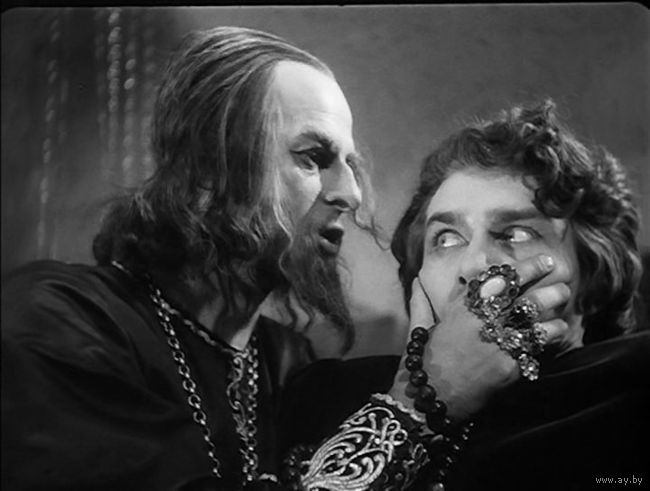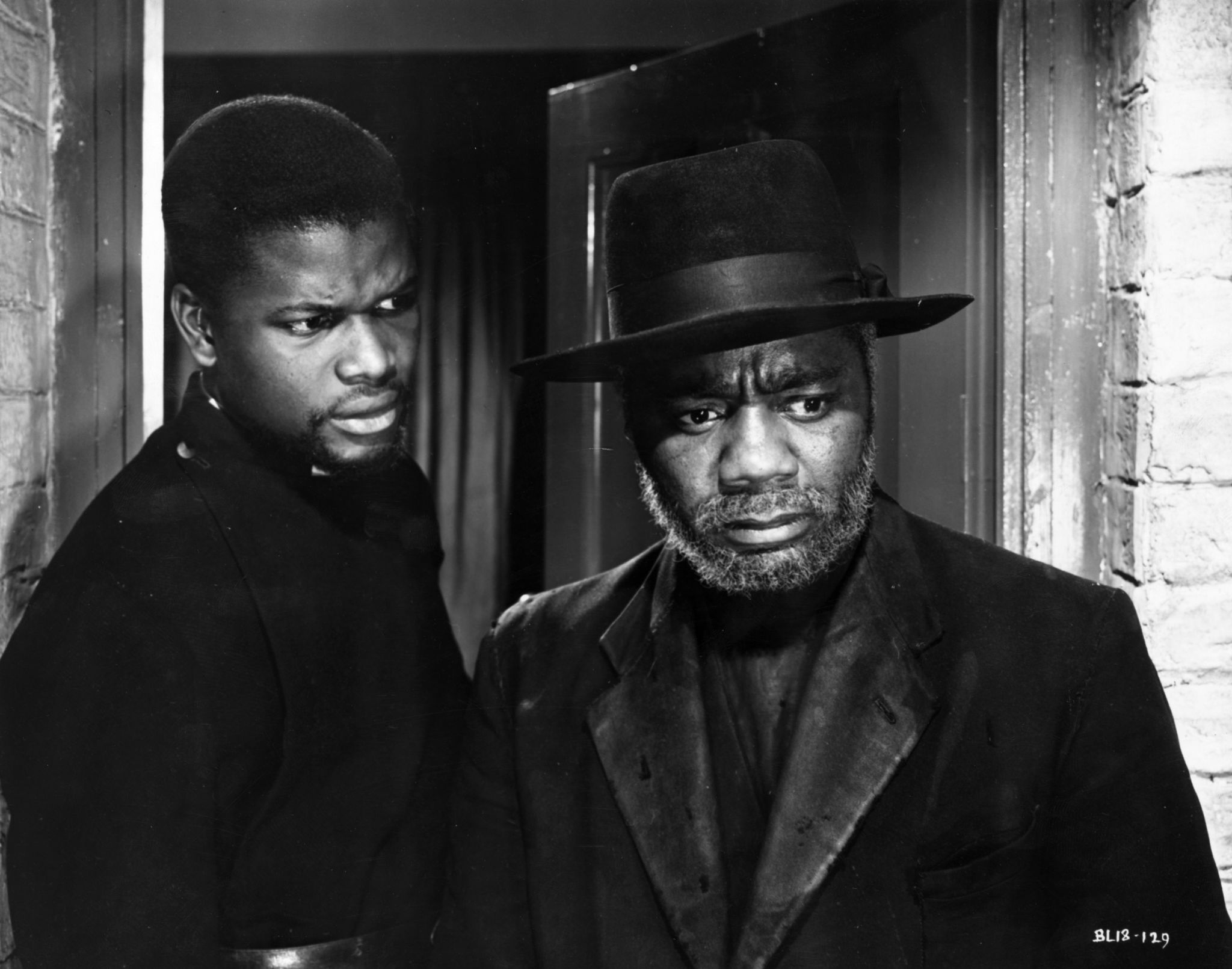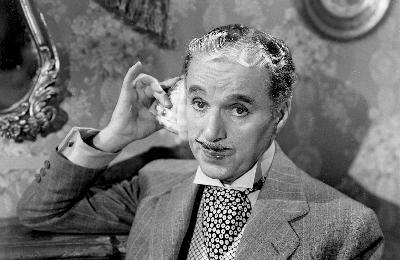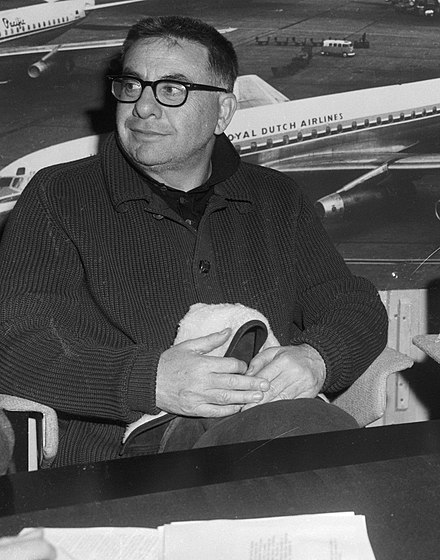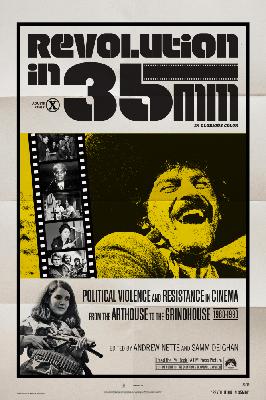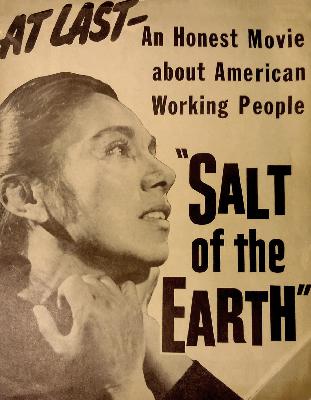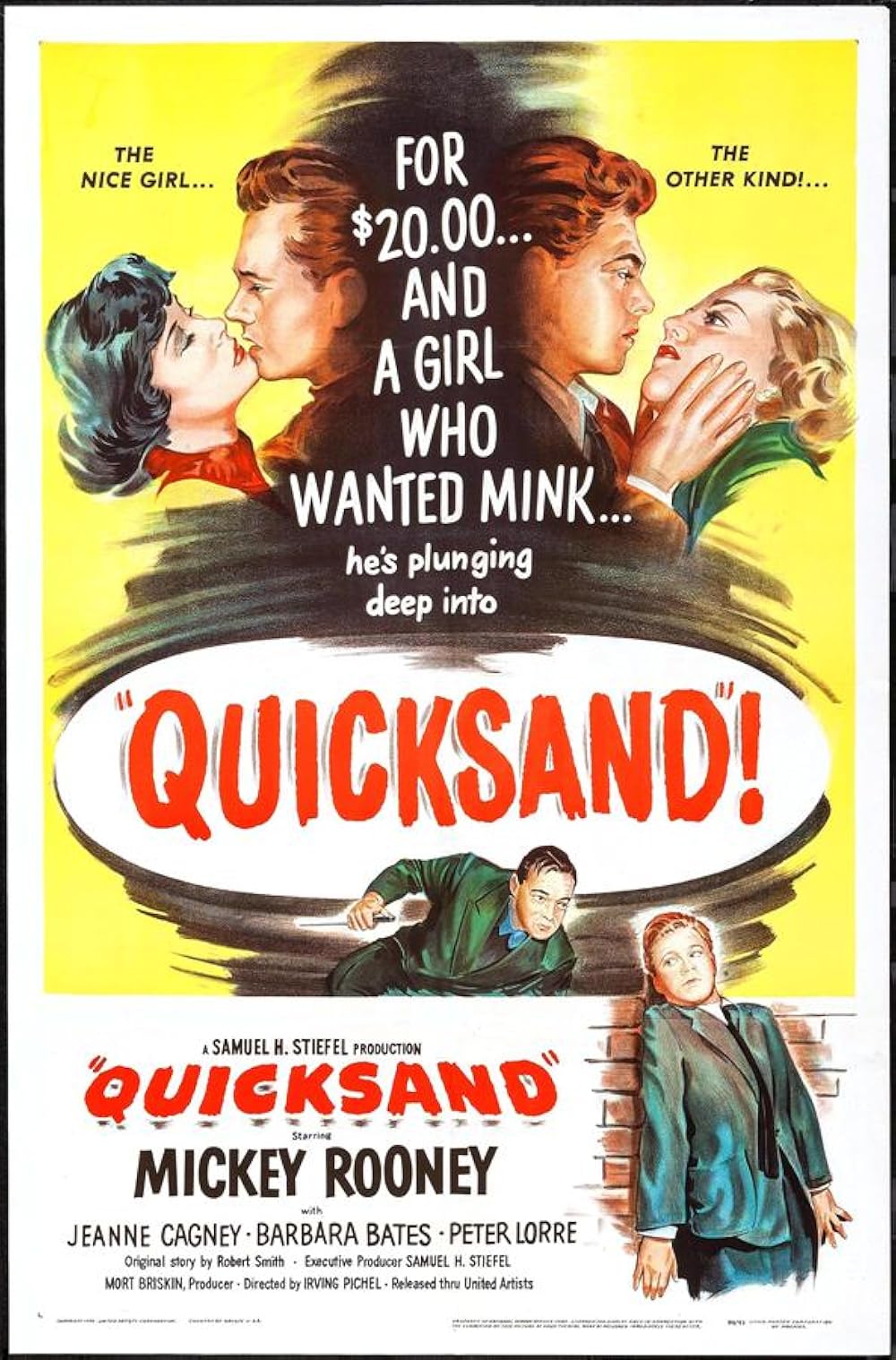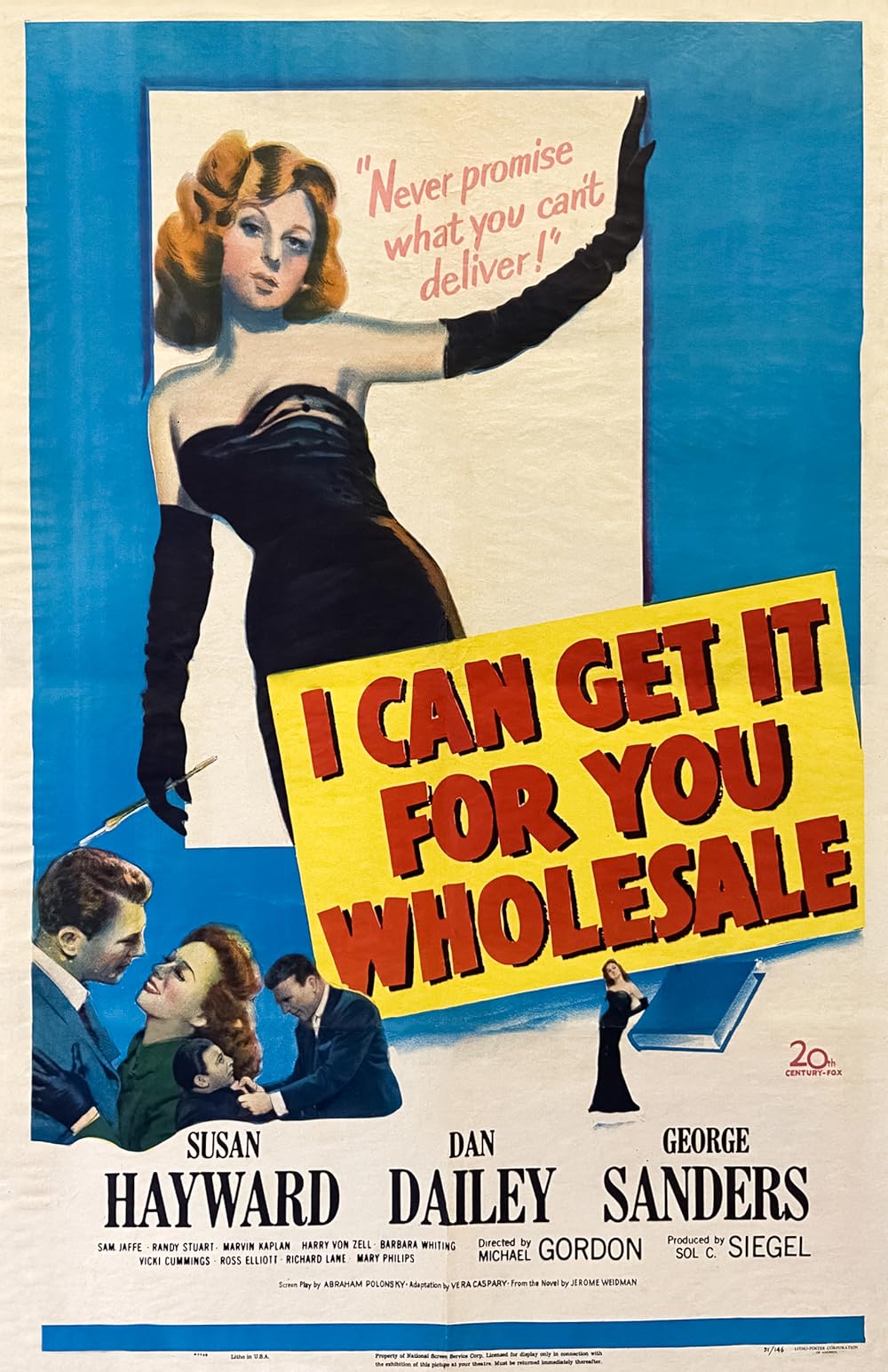Discover Cold War Cinema
Cold War Cinema

Cold War Cinema
Author: Jason Christian and Anthony Ballas
Subscribed: 5Played: 16Subscribe
Share
© 2024
Description
Cold War Cinema is a podcast about movies made during the first few decades of the Cold War (1947–1991). Each episode primarily focuses on one film, and the hosts, Jason Christian and Anthony Ballas, discuss the director's life and work, the historical context of the film, and examine its themes that relate to the turbulent politics of the era.
Theme music and editing on the first 14 episodes by Tim Jones; theme music from then on by DYAD (Charles Ballas and Jeremy Averitt), and editing by Jason Christian.
Logo by Jason Christian
Theme music and editing on the first 14 episodes by Tim Jones; theme music from then on by DYAD (Charles Ballas and Jeremy Averitt), and editing by Jason Christian.
Logo by Jason Christian
26 Episodes
Reverse
“Are you waving the flag at me?” The Cold War Cinema team returns to look at Samuel Fuller’s 1954 noir masterpiece, Pickup on South Street, with special guest Stephen Gillespie, film critic and cohost of The STACKS and I’m Thinking of Spoiling Things. When small-time thief Skip McCoy picks the wrong pocket on a busy subway car, he quickly becomes the most popular lowlife in town, trailed by crooked cops, the feds, and a Communist spy ring. Join Stephen and hosts Jason Christian and Paul T. Klein as they discuss: Why J. Edgar Hoover hated this movie. How the film makes sense of Cold War paranoia through its critique of American ideological systems Pickup on South Street’s depiction of the down-and-out and three-time losers that populate America’s urban landscapes, and how the film suggests they got there. Writer-director Samuel Fuller’s provocative and ultimately idealist politics _____________________ Each episode features book and film recommendations for further exploration. On this episode: Stephen recommends Samuel Fuller’s film Dead Pigeon on Beethoven Street (1972) and Kenneth Lonergan’s Margaret (2011). Paul recommends Samuel Fuller’s film I Shot Jesse James (1949) and Peter Brooks’ book The Melodramatic Imagination: Balzac, Henry James, Melodrama, and the Mode of Excess. Jason recommends Samuel Fuller’s film Shock Corridor (1963) and J. Hoberman’s book An Army of Phantoms: American Movies and the Making of the Cold War. Check out Stephen Gillespie’s two podcasts, I’m Thinking of Spoiling Things and The STACKS, and read his reviews of films and video games at Step Printed (stepprinted.com). Find him on Letterboxd at https://letterboxd.com/stephenage/. _____________________ Like and subscribe to Cold War Cinema, and don’t forget to leave us a review! Want to continue the conversation? Drop us a line at any time at coldwarcinemapod@gmail.com. To stay up to date on Cold War Cinema, follow along at coldwarcinema.com, or find us online on Bluesky @coldwarcinema.com or on X at @Cold_War_Cinema. For more from your hosts: Follow Jason on Bluesky at @JasonChristian.bsky.social, on X at @JasonAChristian, or on Letterboxed at @exilemagic. Follow Anthony on Bluesky at @tonyjballas.bsky.social, on X at @tonyjballas. Follow Paul on Bluesky at @ptklein.com, or on Letterboxed at @ptklein. Paul also writes about movies at www.howotreadmovies.com _____________________ Logo by Jason Christian Theme music by DYAD (Charles Ballas and Jeremy Averitt). Happy listening!
In this bonus episode, cohost Jason Christian interviews the independent filmmaker Christopher Jason Bell. Besides being a filmmaker, Bell is a board of director of the streaming co-op MeansTV. Bell’s archival doc series about George W. Bush’s presidency, Miss Me Yet, can be watched on MeansTV and received praise from numerous outlets such as The Baffler, AV Club, and Filmmaker magazine. His third feature Failed State premiered at Torino Film Festival and is continuing to screen across the world. His newest documentary short, Attention Shoppers, features Abby Martin and can be viewed on MeansTV. His latest narrative short, The Confection, is now playing the festival circuit. In the episode, Christopher elaborates on his filmmaking process, especially making Miss Me Yet and Attention Shoppers, and how he used footage from the YouTube channel Vampire Robot to make the latter. Further, Christpher and Jason reflect on the political climate during the Bush years and today, and the similarities and differences between each era. If you subscribe to MeansTV, and use the promo code CHRISBELL, you’ll get 10% off! On this episode: Christopher recommends Scott Noble’s documentary The Power Principle: Corporate Empire and the Rise of the National Security State (2012), Ian Bell’s 2025 documentary WTO/99, Tyler Rubenfeld’s short horror film Another Sinking Sun (2023), and the book The Sun Won’t Come Out Tomorrow: The Dark History of American Orphanhood, by Kristen Martin. Jason recommends the podcast Blowback, particular Season One about the Iraq War. Follow Christopher Jason Christopher Bell on X (formerly Twitter): @UpdateTheGrids. Follow Jason Christian on X (formerly Twitter): @JasonAChristian. Like and subscribe to Cold War Cinema, and don’t forget to leave us a review! Want to continue the conversation? Drop us a line at any time at coldwarcinemapod@gmail.com. To stay up to date on Cold War Cinema, follow along at coldwarcinema.com, or find us online on Bluesky @coldwarcinema.com or on X at @Cold_War_Cinema.
This week on Cold War Cinema, we discuss the 1953 Soviet science-fiction drama, Silvery Dust, directed by Abram Room and Pavel Armand, a film once again set in the United States. The film concerns an American scientist who has developed a powerful new weapon of mass destruction designed to wipe out populations within a large area while leaving no harmful radioactive residues or traces. In the film, the scientist colludes with a Nazi colleague and various private interests, who all conspire with the government to use innocent Black men as test subjects, without their knowledge or consent. Join hosts Jason Christian, Anthony Ballas, and Paul T. Klein as we consider: The historical legacy of Operation Paperclip, a secret government program in which the US brought some 1,600 scientists, engineers, and technicians from former Nazi Germany to the US for government employment after the end of World War II. The numerous government experiments conducted on minorities without their knowledge or consent, such as the Untreated Syphilis Study at Tuskegee (1932-1972) The contradiction, in the film, of critiquing racism in America while using white Russian actors in “black face.” Comparisons between American and Soviet propanda styles in the 1950s. _____________________ We love to give book or film recommendations on the podcast, so here are ours for this episode: Paul recommends the book, Building a Better Race: Gender, Sexuality, and Eugenics from the Turn of the Century to the Baby Boom by Wendy Kline Tony recommends the book, The Selected Works of Ho Chi Hinh by Ho Chi Minh Jason recommends the book, Deterring Democracy by Noam Chomsky. _____________________ Like and subscribe to Cold War Cinema, and don’t forget to leave us a review! Want to continue the conversation? Drop us a line at any time at coldwarcinemapod@gmail.com. To stay up to date on Cold War Cinema, follow along at coldwarcinema.com, or find us online on Bluesky @coldwarcinema.com or on X at @Cold_War_Cinema.
“Normal people want the basic human rights that accompany citizenship in any sovereign nation. I don't… I don't live anywhere; I'm not a citizen at all. I don't need my human rights.” The Cold War Cinema team is back with special guest Matthew Ellis, a researcher, artist, and cohost of the Pacific Northwest Insurance Corporation Movie Film Podcast, for a special bonus episode covering Wes Anderson’s The Phoenician Scheme. Recently released on home video and streaming, the film follows the cunning, reprobate industrialist Zsa-zsa Korda (Bencio Del Toro) as he swindles his way into a massive infrastructure deal in the country of Upper Independent Phoenicia. Join Matthew Ellis and hosts Jason Christian, Tony Ballas, and Paul T. Klein as they discuss: The Phoenician Scheme’s connections to the Congress for Cultural Freedom, a CIA-backed cultural operation from 1950 that weaponized writers, artists, and other thinkers for intelligence operations. How Anderson’s film reveals the Cold War origins of the contemporary world in its critiques of capitalism and the neoliberal project. The ways that The Phoenician Scheme breaks Anderson’s hermetically sealed aesthetics and alludes to its formal limitations. _____________________ Each episode features book and film recommendations for further exploration. On this episode: Matthew recommends Danny Boyle’s 28 Years Later. Paul recommends Matt Zoller Seitz’s The Wes Anderson Collection and Louis Althusser’s “Ideology and Ideological State Apparatuses: Notes Towards an Investigation.” Tony recommends Carpenter’s Gothic by William Gaddis. Jason recommends The Darker Nations: A People’s History of the Third World by Vijay Prashad. _____________________ Like and subscribe to Cold War Cinema, and don’t forget to leave us a review! Want to continue the conversation? Drop us a line at any time at coldwarcinemapod@gmail.com. To stay up to date on Cold War Cinema, follow along at coldwarcinema.com, or find us online on Bluesky @coldwarcinema.com or on X at @Cold_War_Cinema. For more from your hosts: Follow Jason on Bluesky at @JasonChristian.bsky.social, on X at @JasonAChristian, or on Letterboxed at @exilemagic. Follow Anthony on Bluesky at @tonyjballas.bsky.social, on X at @tonyjballas. Follow Paul on Bluesky at @ptklein.com, or on Letterboxed at @ptklein. Paul also writes about movies at www.howotreadmovies.com _____________________ Logo by Jason Christian Theme music by DYAD (Charles Ballas and Jeremy Averitt). Happy listening!
This week on Cold War Cinema, we discuss Robert Stevenson’s 1949 drama, I Married a Communist, also known as Woman on Pier 13. This Hollywood production is one of the most storied—and notorious—anti-communist films of the early Cold War era. The movie revolves around a San Francisco shipping executive who worked his way up from the docks, as a stevedore, only to find himself embroiled in a Communist plot to sabotage a labor contract. Join hosts Jason Christian, Tony Ballas, and Paul T. Klein as we consider: How Hollywood colluded with the government to portray Communists as nihilistic, intellectual, unfeeling and yet effeminate organized criminals. The condescension at the heart of anti-Communist propaganda in the US that implies that ordinary Americans are too "dumb" to recognize when they are being duped. The paradoxical role of unions in New Deal liberal ideology as a potential bulwark against Communists. The perennial recycled anti-Communist tropes in American political rhetoric to this day. _____________________ We love to give book or film recommendations on the podcast, so here are ours for this episode: Paul recommends Foster Hirsh’s 2023 book Hollywood and the Movies of the Fifties: The Collapse of the Studio System, the Thrill of Cinerama, and the Invasion of the Ultimate Body Snatcher—Television. Tony recommends Gerald Horne's 2011 book, Fighting in Paradise: Labor Unions, Racism, and Communists in the Making of Modern Hawai'i. Jason recommends Rebecca Prime's 2013 book, Hollywood Exiles in Europe: The Blacklist and Cold War Film Culture. _____________________ Like and subscribe to Cold War Cinema, and don’t forget to leave us a review! Want to continue the conversation? Drop us a line at any time at coldwarcinemapod@gmail.com. To stay up to date on Cold War Cinema, follow along at coldwarcinema.com, or find us online on Bluesky @coldwarcinema.com or on X at @Cold_War_Cinema.
“I used to think there was one America, but there are two. There's no place for me in McPherson's and Hearst's America, but there is in Lincoln's and Roosevelts!” This week on Cold War Cinema, we discuss Mikhaill Romm’s 1948 drama, The Russian Question. In this Soviet production, winner of the 1948 Stalin Prize and based on a play of the same name by Konstantin Siminov, a mendacious newspaper editor sends columnist Harry Smith to the Soviet Union to write a book critical of socialism. But when the principled columnist returns to the United States, he quickly realizes that the American press intends to turn the Russian question—whether the Russians want war—into a statement with dangerous geopolitical ramifications. Join hosts Jason Christian, Tony Ballas, and Paul T. Klein as we consider: The role of editing or montage in the construction of political critiques in aesthetic form Why the President of the Motion Picture Association called this a “sneering, lying attack on the United States” and an “open bid to stir contempt and hatred for America on the part of the Russian audiences,” and why he got it all wrong How a Soviet film about a sensationalist American news media helps us understand our current political moment _____________________ We love to give book or film recommendations on the podcast, so here are ours for this episode: Paul recommends Clarence Brown’s 1949 drama Intruder in the Dust. Tony recommends Langston Hughes 1961 collection, Ask Your Mama: 12 Moods for Jazz. Jason recommends Mikhail Romm’s 1961 drama Nine Days in One Year. _____________________ Like and subscribe to Cold War Cinema, and don’t forget to leave us a review! Want to continue the conversation? Drop us a line at any time at coldwarcinemapod@gmail.com. To stay up to date on Cold War Cinema, follow along at coldwarcinema.com, or find us online on Bluesky @coldwarcinema.com or on X at @Cold_War_Cinema.
In this crossover episode with Rakeem Shabazz of Wise the Dome TV, Cold War Cinema co-host Anthony Ballas discusses the recent documentary Soundtrack to a Coup d’État (dir. Johan Grimonprez 2024). The documentary explores the weaponization of jazz music during the Cold War, the contradictions of using Black art to mask American imperialism, and the legacy of artists like Louis Armstrong, Max Roach, and Nina Simone. Ballas breaks down how the film links Cold War coups and cultural propaganda to present-day resource extraction in the Congo, and why the documentary’s archival style is itself a radical political act. Ballas also discusses his recent piece on the film (co-authored with Gerald Horne), "Antidote to Soft Power: Johan Grimonprez’s Soundtrack to a Coup d’État" for Scalawag Magazine. Please subscribe to the podcast, and don't forget to leave a review! Also, make sure you check out and subscribe to Wise the Dome TV. _____________________ Logo by Jason Christian Theme music by DYAD (Charles Ballas and Jeremy Averitt). Please drop us a line anytime at coldwarcinemapod@gmail.com. Happy listening!
This is a crossover episode with The Socialist Shelf podcast. Our co-host Jason and his wife, Ankita, were invited on the Socialist Shelf to dicuss a radical cinema educational project they run in Atlanta called Resistance Cinema, as well as the role that radical cinema plays in social movemets. Ankita is a Bollywood expert and the co-host of the The Desi Gaze, a podcast about overlooked Hindi cinema. We hope you enjoy this show! Don't forget to subscribe to The Socialist Shelf and The Desi Gaze, and leave us a review! Jason's article referenced in the podcast is a review of the book Revolution in 35mm, co-edited by Andrew Nette and Samm Deighan. Jacob, from The Socialist Shelf, has written a novel, and you can pre-order it here. Music for The Socialist Shelf by Solo Monk (@SoloMonk256 on Twitter).
Join hosts Jason and Paul for a discussion of William A. Wellman's 1948 spy thriller The Iron Curtain, starring Dana Andrews and Jean Tierney. Regarded as an anti-communist propaganda film, The Iron Curtain was the first major Hollywood studio production to engage directly with the Cold War. The story is based on the memoirs of the Russian spy Igor Gouzenko, who stole documents from the Soviet embasy in Ottawa, where he worked, and defected to Canada. This act of espionage led to the dismantling of a Soviet "atomic spy ring," and the arrests or numerous people both in Canada and the United States. At a time of relative peace post-WWII, the New York Times critic Bosley Crowther considered The Iron Curtain "a highly inflamatory film" and a dangerous provocation. "Hollywood fired its first shot in the 'cold war' against Russia yesterday," Crowther writtes in his review, "just when a faint hope was glimmering that maybe moderation in fact might be achieved.” _____________________ We love to give book or film recommendations on the podcast, so here are ours for this episode: Paul recommends the pro-Soviet Hollywood propaganda film Mission to Moscow (1943; dir. Michael Curtiz) Jason recommends the 2000 book The Cultural Cold War: The CIA and the World of Arts and Letters by Frances Stonor Saunders _____________________ Please subscribe to the podcast, and don't forget to leave a review! Follow Jason on Twitter at @JasonAChristian and Anthony at @tonyjballas (same handles on BlueSky). Follow Paul on BlueSky at @ptklein.com. Paul writes about movies at www.howtoreadmovies.com. Paul's handle on Letterboxd is https://letterboxd.com/ptklein/; Jason's is https://letterboxd.com/exilemagic/. _____________________ Logo by Jason Christian Theme music by DYAD (Charles Ballas and Jeremy Averitt). Please drop us a line anytime at coldwarcinemapod@gmail.com. Happy listening!
Join hosts Jason, Tony, and our new co-host, Paul, on Episode One of Season Two! On this episode we discuss Sergei Eisenstein's epic two-part Soviet masterpiece Ivan the Terrible, released in 1945 and 1958 respectively. The films were commissioned by Joseph Stalin in 1941 as a means to rehabilitate Ivan the Terrible's image for a contemporary Soviet audience. Stalin celebrated Part 1, but the state banned Part 2. A third part had been in the works, but was abandoned by Eisenstein after the suppression of the second part. Our discussion touches on this history and many other topics, including Soviet montage, dialectical art construction, Eisenstein's queerness, his fraught relationship with Stalin, and more. This is the first episode of a new format in which we take book or movie recommendations from each of us, which are found below: Tony's book recommendations: Sergei Eisenstein: A Life in Conflict by Ronald Bergan (2016) Narrative, Apparatus, Ideology, edited by Philip Rosen (1986) Film Form: Essays in Film Theory by Sergei Eisenstein (1949) Paul's book and film recommendations: This Thing of Darkness: Eisenstein’s Ivan the Terrible in Stalinist Russia by Joan Neuberger (2019) Ivan the Terrible by Joan Neuberger Battleship Potemkin (1925; dir. Sergei Eisenstein) Jason's movie recommendations: Come and See (1985; dir. Elem Klimov) The Ascent (1977; dir. Larisa Shepitko) Wings (1966; dir. Larisa Shepitko) Please subscribe to the podcast, and don't forget to leave a review! Follow Jason on Twitter at @JasonAChristian and Anthony at @tonyjballas; follow Paul on BlueSky at @ptklein.com. Paul writes about movies at www.howtoreadmovies.com. Paul's handle on Letterboxd is https://letterboxd.com/ptklein/; Jason's is https://letterboxd.com/exilemagic/. Our logo is by Jason Christian The theme music for this episode and all forthcoming episodes is by DYAD (Charles Ballas and Jeremy Averitt). Please drop us a line anytime at coldwarcinemapod@gmail.com. Happy listening!
Join hosts Jason and Tony, as well as a new guest, Felicia Maroni, for the finale of Season One. On this episode we discuss Zoltán Korda's 1951 drama Cry, the Beloved Country, a film shot on location in South Africa, starring Canada Lee and Sidney Poitier, which aimed to critique the brutal apartheid system just three years after it was codified into law. The film was based on a novel of the same name by Alan Paton, a white South African, and adapted to the screen by Paton and the blacklisted writer John Howard Lawson, who went uncredited. Book mentioned: Frantz Fanon's The Wretched of the Earth (1961) Felicia is the host of the wondeful film podcast Seeing Faces in the Movies, which focuses on either a director or cinemtagrapher and how their aesthetic approach changes (or doesn't) across their ouevre. You can follow Felicia on social media at these sites: IG: @seeingfacesinmovies Twitter (X): @seeingmoviespod Letterboxd: @cinemaroni As always, please suscribe to the podcast, and don't forget to leave a review! And follow Jason on Twitter (X) at @JasonAChristian and Anthony at @tonyjballas (same handles at Bluesky). Jason's handle on Letterboxd is https://letterboxd.com/exilemagic/. Our logo is by Jason Christian Theme music is by DYAD (Charles Ballas and Jeremy Averitt) Please drop us a line at coldwarcinemapod@gmail.com. Happy listening!
Grab your sandals and sword and get philosophical with Jason, Tony, and our guest Paul Klein, as we unpack the wonders of Stanley Kubrick’s Spartacus (1960). The film was adapted from Howard Fast's novel of the same title by Dalton Trumbo, and it is considered a major step in the end of the notorious Hollywood blacklist. The film is also read as an allegory for civil rights stuggles, the HUAC hearings, and "Third World" struggles. All of this and more is discussed in the episode. Books and articles mentioned: Who Paid the Piper: The CIA and the Cultural Cold War by Frances Stonor Saunders The Final Victim of the Blacklist: John Howard Lawson, Dean of the Hollywood Ten by Gerald Horne Aesthetic Theory by Theodor Adorno “Fascinating Fascism” by Susan Sontag As always, please suscribe to the podcast, and don't forget to leave a review! And follow Jason on Twitter (X) at @JasonAChristian, Anthony at @tonyjballas, and Paul at @ptklein, and the same handles at BlueSky. Paul's handle on Letterboxd is https://letterboxd.com/ptklein/; Jason's is https://letterboxd.com/exilemagic/. Our logo is by Jason Christian The theme music for this episode and all forthcoming episodes is by DYAD (Charles Ballas and Jeremy Averitt). Please drop us a line at coldwarcinemapod@gmail.com. Happy listening!
Join hosts Jason Christian and Anthony Ballas, as well as a new guest, Paul Klein, as they discuss the iconic actor and director Charlie Chaplin and his late talkie masterpiece Monsieur Verdoux (1947). Paul is a film scholar who writes at the intersection of film and history. His research focuses on the cultural, political, and technological aspects of Hollywood and American filmgoing practices. He also write about how and why movies matter at Reading Movies (howtoreadmovies.com) As for Chaplin, he hardly needs an introduction, but many people don't realize that he was a victim of Red Scare harrassment from the media and feds and was eventually exiled from the United States. Monsieur Verdoux is a bold film in that it asks a viewer, just two years after the end of WWII, to consider state-sponsored mass murder (e.g. war) and what Engels calls "social murder" (murder by deprivation), as opposed to individual crimes, which are easier to identify and denounce. It's also a Chaplin film full of his signiture gags. The combination of these two registers, deadly serious and comical, makes for a fascinating but jarring cinematic experience. As always, please suscribe to the podcast, and don't forget to leave us a review! Follow Jason on Twitter (X) at @JasonAChristian, Anthony at @tonyjballas, and Paul at @ptklein, the latter two are also on BlueSky. Please drop us a line anytime at coldwarcinemapod@gmail.com. Happy listening!
Join hosts Jason Christian, Anthony Ballas, and Tim Jones as they discuss the celebrated socially conscious Hollywood director, Martin Ritt (1914–1990). Ritt is known for a number of critically aclaimed movies, among them Paris Blues (1961), Hud (1963), and The Spy Who Came In from the Cold (1965). In this episode, we focus on four of Ritt's explicitly pro-worker films: The Molly Maguires (1970), Sounder (1972), The Front (1976), and Norma Rae (1979). Ritt was never brought before HUAC, but he nevertheless blacklisted after his name was mentioned in the right-wing anticommunist newsletter Counterattack, along with 150 of other Hollywood workers. These experiences were satirized in The Front, the first film that confronts the blacklist era directly. Sally Field, the star of Norma Rae, once wrote of Ritt that "he felt it was important to stand for something, to have a moral point of view—especially if you work in the arts." That committment to justice is present all through Ritt's work. He boldly tackled labor issues and racism in a number of films, going as far as critiquing the all-white suburbian "utopias" in the overlooked gem No Down Payment (1957). As always, please suscribe to the podcast, and don't forget to leave us a review! Drop us a line at coldwarcinemapod@gmail.com Happy listening!
Join us for our first ever interview with the Australian writer and scholar, Andrew Nette, who, along with the film historian Samm Deighan, co-edited the new book Revolution in 35mm: Political Violence and Resistance in Cinema from the Arthouse to the Grindhouse, 1960–1990, published by PM Press. Nette is an author of fiction and nonfiction. He is coeditor of three previous books for PM Press, Girl Gangs, Biker Boys, and Real Cool Cats: Pulp Fiction and Youth Culture, 1950 to 1980; Sticking It to the Man: Revolution and Counterculture in Pulp and Popular Fiction, 1950 to 1980; and Dangerous Visions and New Worlds: Radical Science Fiction, 1950 to 1985. His writing on film, books, and culture has appeared in a variety of print and online publications. He has also contributed video and print essays and commentaries to a number of DVD/Blu-ray releases. He writes a regular newsletter under his name on Substack. Follow him on Twitter (X), Instagram, and Bluesky: @pulpcurry. Nette is also on Letterboxd, and he made a list of all 353 films mentioned in Revolution in 35mm. As always please subscribe to the podcast, and don't forget to leave us a review! Send us tips or ideas or anything else at coldwarcinemapod@gmail.com. We hope you enjoy!
Join hosts Jason Christian, Anthony Ballas, and Tim Jones as they discuss Herbert J. Biberman's iconic independent masterpiece Salt of the Earth (1954). The film is based on the real-life Empire Zinc strike in 1951 in Grant County, New Mexico, and was self-financed and made entirely outside the studio system using mostly non-professional actors, many of them actual miners playing versions of themselves. Jason compares the the film to Gillo Pontecorvo's 1966 masterpiece The Battle of Algiers in terms of its scrappy production, dialectical sctructure, and Marxist themes. (You can hear him gush about that film on another podcast, linked here.) Biberman was one of the Hollywood Ten and he was blacklisted, as were the screenwriter, Michael Wilson, and the producer, Paul Jarrico. The Hollywood apparatus and law enforcement attempted to sabotage the production of Salt of the Earth on numerous occasions, going as far as getting the lead actress, Rosaura Revueltas, deported to Mexico on trumped up charges. Although she was from a prominent family of artists and writers, she was blacklisted and never acted in another Mexican film. As always please suscribe to the podcast if you like what you hear, and don't forget to leave us a review! Happy listening!
Join hosts Jason Christian, Anthony Ballas, and Tim Jones as they discuss Irving Pichel's 1950 crime thriller Quicksand, starring Mickey Rooney, Peter Lorre, Jeanne Cagney, and Barbara Bates. The film's plot revolves around Rooney's character making one bad decision after another, shattering his moral compass along the way. The implicit message, heavy-handed in its delivery, is that poverty breeds crime. Pichel was one of the so-called "unfriendly nineteen" brought before HUAC hearings in 1947. That group was whittled down to ten and later dubbed the Hollywood Ten. Pichel was blacklisted along with the others who refused to testify. We hope you enjoy this episode. Please subscribe and rate the show if you feel so inclined. And if you have any comments, recomendations, or questions, feel free to email them to us at coldwarcinemapod@gmail.com. Happy listening!
Join hosts Jason Christian, Anthony Ballas, and Tim Jones as they discuss Michael Gordon's 1951 drama I Can Get It for You Wholesale, a film that explores the cutthroat fashion industry in New York City's garment district. It was written by Abraham Polonsky and Vera Caspary and stars Susan Hayward, Dan Dailey, and George Sanders. Gordon and Polonsky were blacklisted during the infamous HUAC anti-communist hearings. After the blacklist lifted, Gordon returned to Hollywood to direct several light-hearted comedies. We hope you enjoy this episode and, as always, please subscribe and rate the show if you feel so inclined!
This episode is a slight departure for this season—and we had fun with it. Rather than taking on a film directed by a blacklisted director, as usual, we're discussing a groundbreaking video essay about blacklisted directors. Thom Andersen's Red Hollywood (1996) discusses several of the directors and films we've discuss so far on the podcast. Andersen's goal in the film is to curate a list of overlooked films and demonstrate the bold themes that many of these directors were attempting to inject into some of them, much of which was later used as evidence against them in future HUAC hearings. The film features interviews with Abraham Polonsky, Ring Larnder, Jr., Paul Jarrico, and Alfred Levitt. Andersen (b. 1943) is the originator of the term "film gris," or socially conscious crime pictures from 1947 to 1952. He is perhaps most renowned for his experimental video essay Los Angeles Plays Itself (2003). *Fact checking ourselves: —Tim implies that Kafka (yes, Kafka) is Germany, but in fact he only wrote in German. He was from Prague of course. —Jason says that he lived in communes for 15 years, but actually it was about ten (oops). We hope you enjoy!
Join hosts Jason Christian, Anthony Ballas, and Tim Jones as they discuss Abraham Polonsky’s debut film Force of Evil, a 1948 crime picture starring John Garfield, Beatrice Pearson, and Thomas Gomez. Force of Evil is one of thirteen movies the critic and filmmaker Thom Andersen identifies as film gris, or socially conscious crime cinema made from 1947 to 1951, during the height of the notorious House Un-American Activities hearings. In 1951, Polonsky refused to testify before his own HUAC hearing, and was subsequently blacklisted. He only directed two other films, Tell Them Willie Boy Is Here (1969) and Romance of a Horsethief (1971), and remained a committed marxist all his life. We hope you enjoy this episode!


